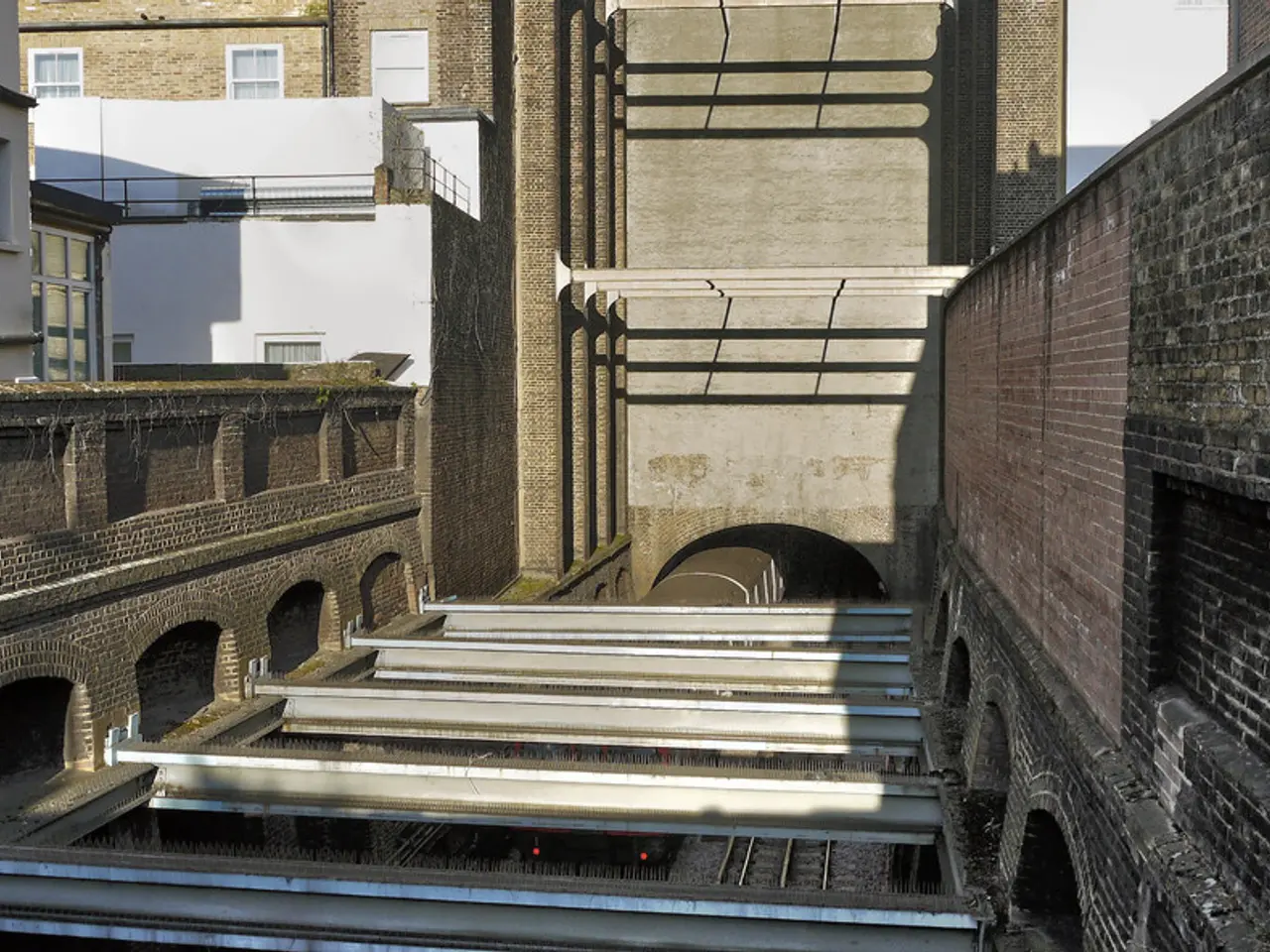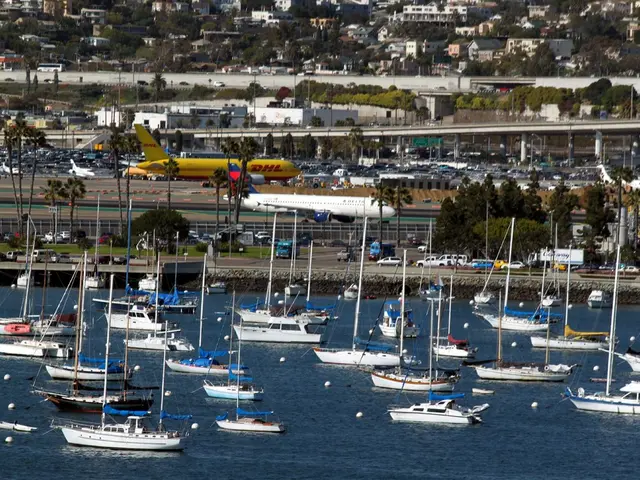Vacation time at the beach, coupled with the spectacle of a newly opened Baltic Sea tunnel under construction.
A Bird's-Eye View of the Fehmarnbelt Tunnel Construction
The Fehmarnbelt Tunnel, a groundbreaking fixed link under the Baltic Sea connecting Denmark and Germany, is currently under construction and set to open by mid to late 2029 [1][2][5]. This tunnel, which will be the world’s longest immersed road and rail tunnel, spans approximately 17.6 to 18 kilometers between the Danish island of Lolland (near Rødbyhavn) and the German island of Fehmarn (near Puttgarden) [1][2].
Construction Progress
The tunnel elements are precast concrete segments produced in a large factory near Rødbyhavn in Denmark, with about 1,500 tonnes of reinforcement produced weekly and large-scale formwork supplied for casting these elements [1][2]. Construction milestones include the ceremonial inauguration of the first tunnel segment in June 2024. The tunnel portals and tunnel element factory on both the Danish and German sides are visibly progressing, as confirmed by recent drone footage captured in August 2025 [1].
On the German side, work is underway to build a vital rail connection linking the tunnel to the mainland rail network between Fehmarn and Lübeck, scheduled to be operational by the end of 2029 [3]. This associated rail link will significantly reduce travel times from Copenhagen to Hamburg, with estimated journey times of about 2.5 hours by train, down from the current 4.5 hours [2][3].
Visitor Information
At present, the construction sites are active industrial zones with no public visitor centers or tourist vantage points specifically designated for watching construction. The sites on the Danish island of Lolland and the German side near Fehmarn are the core locations [1]. Public information is primarily available through official channels such as Femern A/S (the Danish operator), drone footage releases, and periodic updates from authorities [1].
Observation Platform
While there is no formal visitor observation point open to the public at this time, an observation platform has been established at Puttgarden, Fehmarn, offering a six-meter-high view of the Baltic Sea tunnel construction site to Denmark [6]. The observation platform, made of four stacked 40-foot sea containers, is equipped with two binoculars and is accessible via a staircase around the clock [6]. It is part of the construction site of the world's longest immersed tunnel, according to the Danish planning company Femern A/S [7].
The observation point at the German tunnel construction site is well-received by both locals and tourists, providing an opportunity to experience the construction work up close [8]. The platform is powered by a photovoltaic system [9]. Visitors interested in the tunnel should monitor Femern A/S releases and authorized media for future updates or potential visitor access once construction phases allow.
[1] https://www.fehmarntunnel.com/en/ [2] https://www.femern-a-s.de/en/ [3] https://www.bahn.com/ [4] https://www.dr.dk/nyheder/aktuel/ferie/fehmarnbelt-tunnel-og-ferie-i-2029 [5] https://www.femern-a-s.de/en/fehmarnbelt-tunnel/the-tunnel/ [6] https://www.schleswig-holstein.de/fehmarnbelt-tunnel-observation-deck-opened-to-the-public-469682 [7] https://www.femern-a-s.de/en/press-room/press-releases/ [8] https://www.fehmarnbelt-tunnel.de/en/news/ [9] https://www.femern-a-s.de/en/sustainability/green-energy/
This observation platform, located at Puttgarden, Fehmarn, offers a unique lifestyle experience, enabling individuals to observe the Fehmarnbelt Tunnel construction up close. The tunnel, which will significantly reduce travel times, will be the world's longest immersed road and rail tunnel, spanning across the Baltic Sea between Denmark and Germany.




